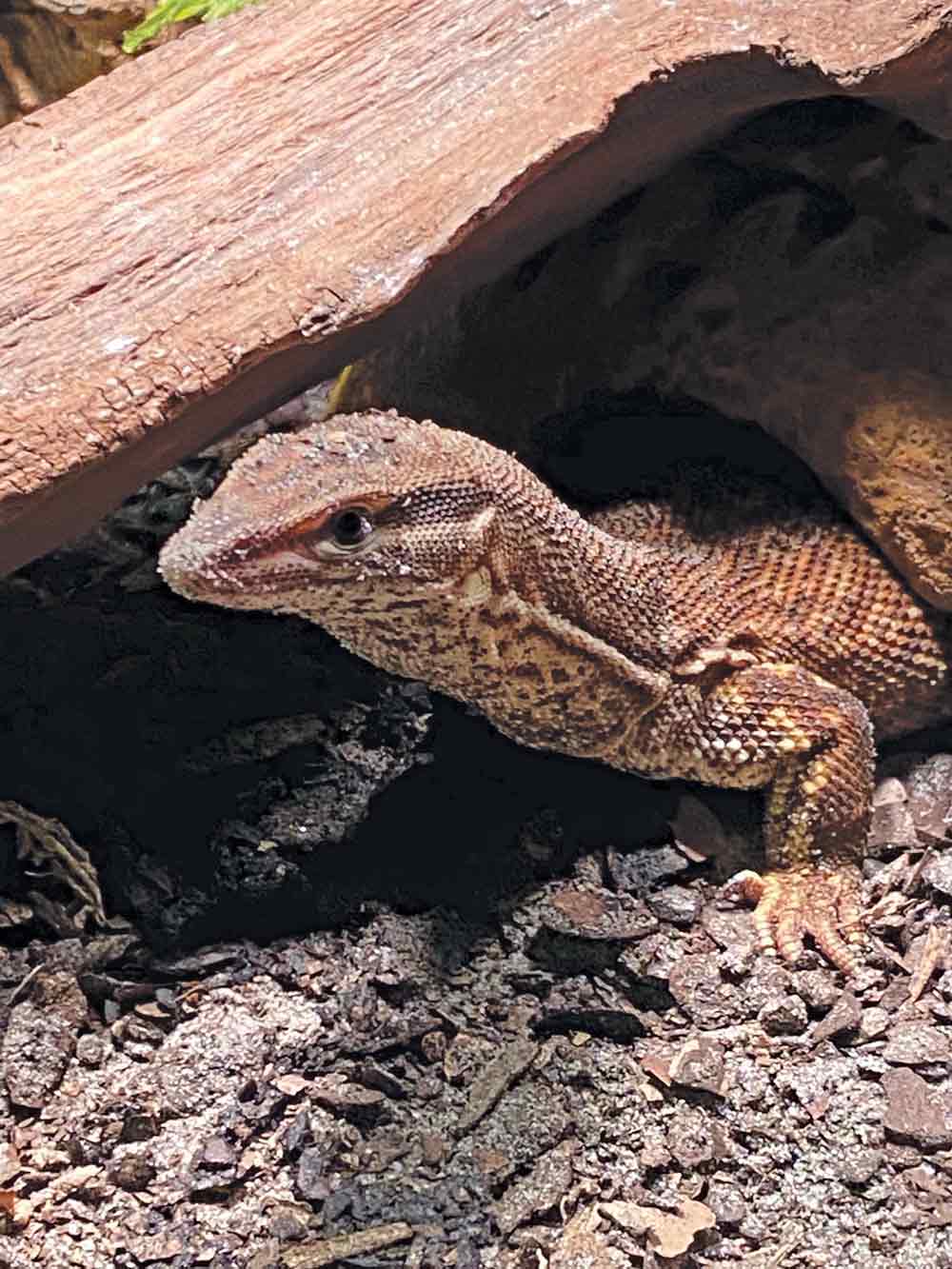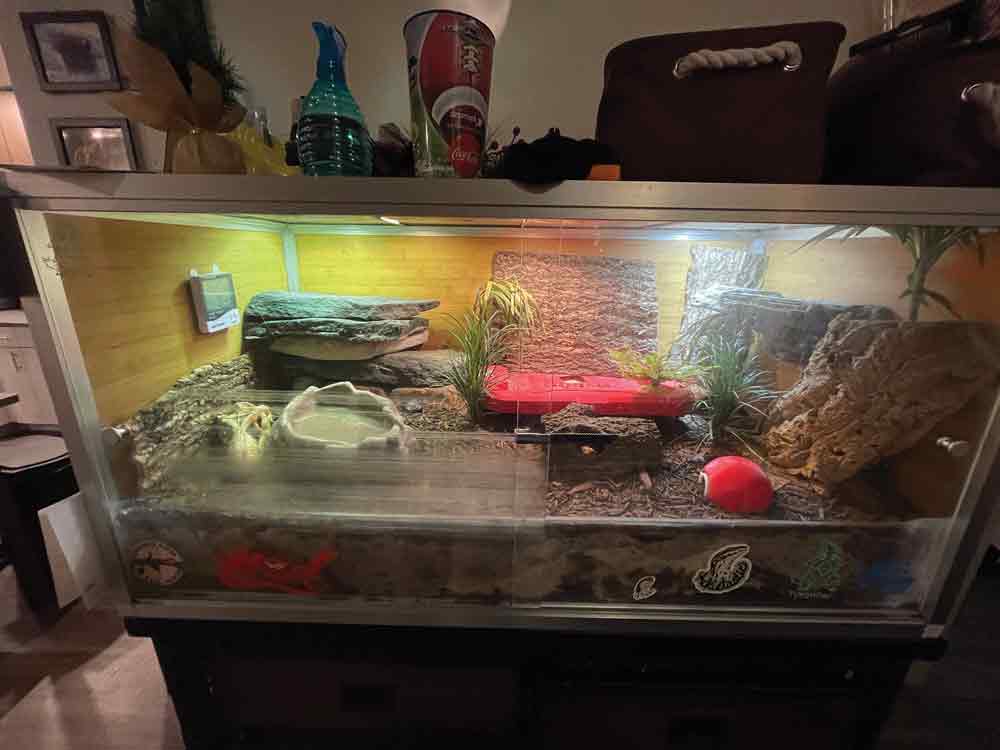Care also needs to be taken when choosing the correct substrate, and maintenance of said substrate.
A heavily debated topic on both the keeper and veterinarian front I’ve seen in reptile husbandry is the use of loose substrate in enclosures. This article plans to explore the benefits and potential risks of certain substrates and how to use it correctly to ensure the health of your animal. Before we begin we need to define what loose substrate means. Loose substrate is any type of soil, coconut coir, or sand that is utilized as the bedding for a reptile enclosure. The alternative to loose substrate includes sterile substrates such as paper towels, newspapers, reptile carpets, tile, and the like.

Both loose and sterile substrate options have their place in the husbandry of a reptile depending on the animal’s health.
Loose substrates provide many benefits for captive reptiles. It allows for enrichment, as burrowing species are able to tunnel into it and create burrows, allowing them to engage in natural behaviors. This exercise that loose substrates provide helps reduce diseases like obesity. These types of substrates also help maintain humidity in enclosures, which can help with dysecdysis—a common problem I often see reptiles present for—and provide the microclimates necessary for reptiles to maintain hydration (many reptiles can draw moisture from humid air). Additionally, providing substrate at the appropriate temperatures may allow female reptiles to lay their eggs instead of retaining these follicles and suffering from follicular stasis or worse egg yolk coelomitis.
However, loose substrate is not a benign addition to an enclosure. Loose substrates by their very nature pose a risk for impaction if ingested in sufficient quantities, which can lead to life threatening issues that can require emergency surgery to remove or even cause death.
Care also needs to be taken when choosing the correct substrate, and maintenance of said substrate. In general, play sand alone is not a suitable substrate for most reptiles- the exceptions that come to mind are animals such as Kenyan sand boas, sandfish skinks, and Peter’s banded skinks. I also discourage the use of substrates with calcium, as this is made up of the same material as calcium supplements, which makes animals more likely to ingest the sand and increases their likelihood of impaction.
Other poor substrate options include pine shavings, walnut shells, and chemically treated soils. Loose substrate needs to be properly maintained, as otherwise it can serve as a potent breeding ground for bacteria, fungi, and parasites. This becomes even more prudent if an infected animal is living in a bioactive set up, as it can be extremely difficult to clear infections from both the animals, clean up crew, and environment. If loose substrates are constantly damp, this can also predispose reptiles to bacterial and/or fungal skin infections.
For these and other reasons, sterile substrates are viable options for reptiles in certain instances. If there are any wounds, regardless whether they were trauma-induced or from a surgery, it is imperative to keep these animals in a sterile environment to ensure that 1) excessive debris does not enter the wound, and 2) you monitor the surgery site for any changes such as oozing, bleeding, or any discharge. Sterile substrates are also important for set ups where a reptile’s fecal and urate output needs to be carefully monitored, such as in a hospitalization set up or in a quarantine set up.
Overall, both loose and sterile substrate options have their place in the husbandry of a reptile depending on the animal’s health.
Eric Los Kamp, DVM is an exotic animal and wildlife veterinarian at Winter Park Veterinary Hospital in Winter Park, FL who has aspirations to board certify in reptile/amphibian medicine. In addition to being a member of the Association of Reptile and Amphibian Veterinarians (ARAV), he is an avid ackie monitor keeper.


